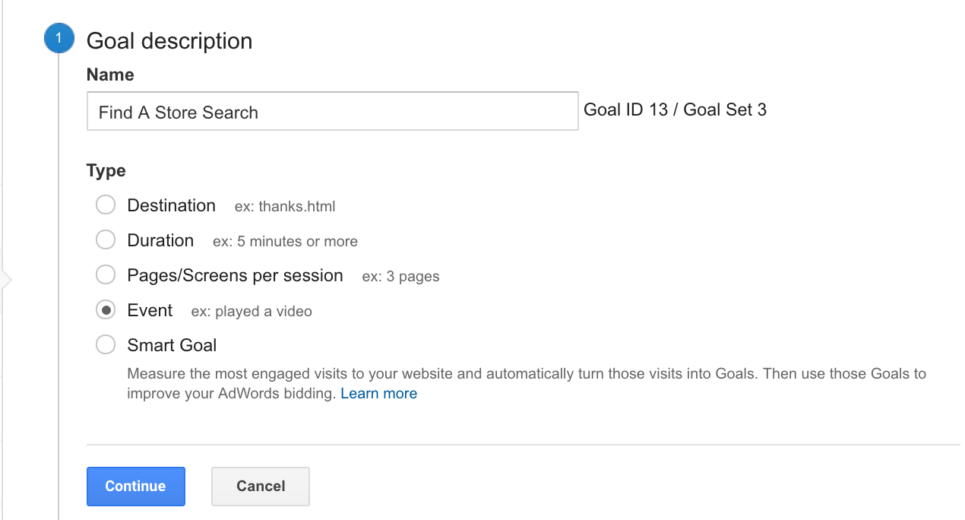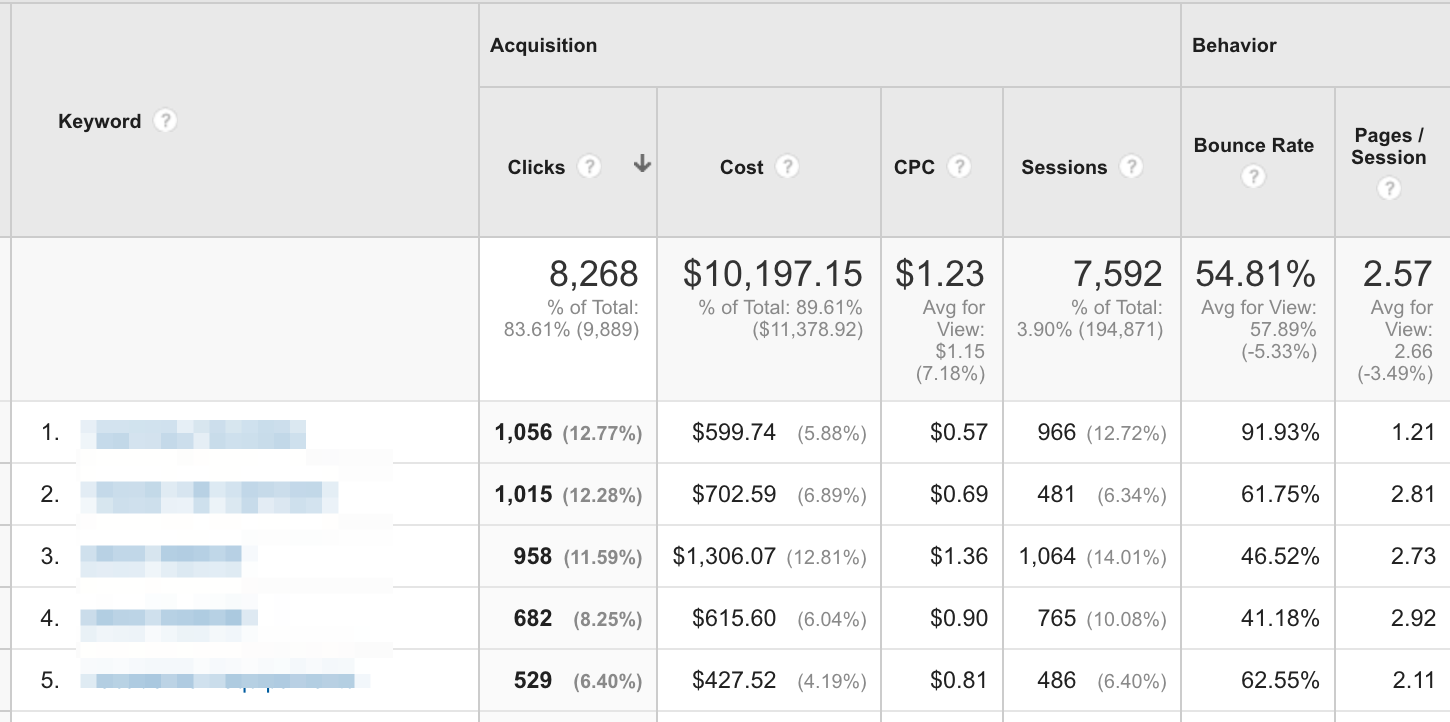PPC is all about optimization. We’re constantly thinking “how can I improve performance? What are my KPIs and goals? What’s the next step?” However, there are instances where the client isn’t tracking conversions (in the traditional sense, anyway) or conversions just don’t happen all that often. In these situations, we have to get creative in how we think about performance and optimization.
Here we’ll go through some alternative ways to measure performance and how to optimize to these metrics.
Micro Conversions
According to Google, micro conversions are “activities that users frequently engage in before purchasing.” These are a great way to gauge the amount of interest or intent your users have in making a purchase. Here are some examples of micro conversions:
- Key pageviews
- Button clicks
- Video views
- Report downloads
- Webinar signups
With Google Analytics, these events are easy to track. Simply create goals in the Admin tab and voila.
For one particular client, the main goal is to drive online sales. However, online transactions don’t happen all that often because 1) the products are high end (read: pricey) and 2) they also sell in brick and mortar stores. We have a goal set up in Analytics to track how PPC is driving people to search for a physical location near them.

Unfortunately, as of right now we don’t have a great way to track how many of these customers are actually making their way into a store. But that’s a topic for another day. Now let’s see what else we can do with this event in GA.

The above screenshot is a custom report showing keywords and their corresponding campaign and ad group. We have the cost, find a store event goal and a few engagement metrics. We also have a calculated metric, which is set up in the Admin tab. This view allows for a quick snapshot of which keywords are performing well with low CPAs, and which keywords aren’t driving good traffic for us. Simply export this data to Excel and you’re ready to make bid changes.
As a bonus, you can use these micro conversions as remarketing audiences as well. Now you can further entice those users to come back to your site to make that final conversion.
Site Engagement
How do you measure the quality of visitors without conversion volume? The answer can be a simple one: site engagement. Here are some good site engagement metrics to watch:
- Session duration
- Pages/visit
- Bounce rate

You’ll notice that the keyword with the most clicks here also has a pretty high bounce rate (91%) and lower pages/session (1.21). We spent almost $600 to drive users to the site who are ultimately just bouncing off. We might want to bid down or pause this keyword if it is also lacking macro conversions.
Cost-Per-Click (CPC)
Some accounts operate on a CPC goal, rather than a traditional conversion volume or CPA goal. As you might expect, bidding is extremely important in this case. “But how do I manage bids to achieve a goal CPC?” you might ask. Here are some options:
- Automated bidding
- Scripts
- AdWords/Bing rules
- Bidding platforms (Kenshoo, Acquisio, etc.)
- Manual bidding
- Excel bidding
- In between automated and manual bidding, create formulas in Excel that allow you to have a human touch when adjusting bids
No matter which one you choose, just make sure you have a strategy in place.
Click Through Rate (CTR) And/Or Clicks
If your client just wants to get visitors to the site, CTR or clicks might be the metric of choice. Click through rate can be an indicator of how relevant your ad is to the users’ search query.
Optimizations include:
- Pausing low CTR keywords
- Combing through search query reports to remove junk traffic
- Increasing bids on high CTR and highly relevant keywords
Why It Matters
If you don’t have conversion tracking, or if you just don’t get a lot of conversions, optimizing on some of the above metrics is a great way to ensure that your account doesn’t go stagnant. By continuously making little adjustments based on micro conversions, user site engagement, or CTR or CPC, you’ll always be making steps in the right direction to drive qualified users.



